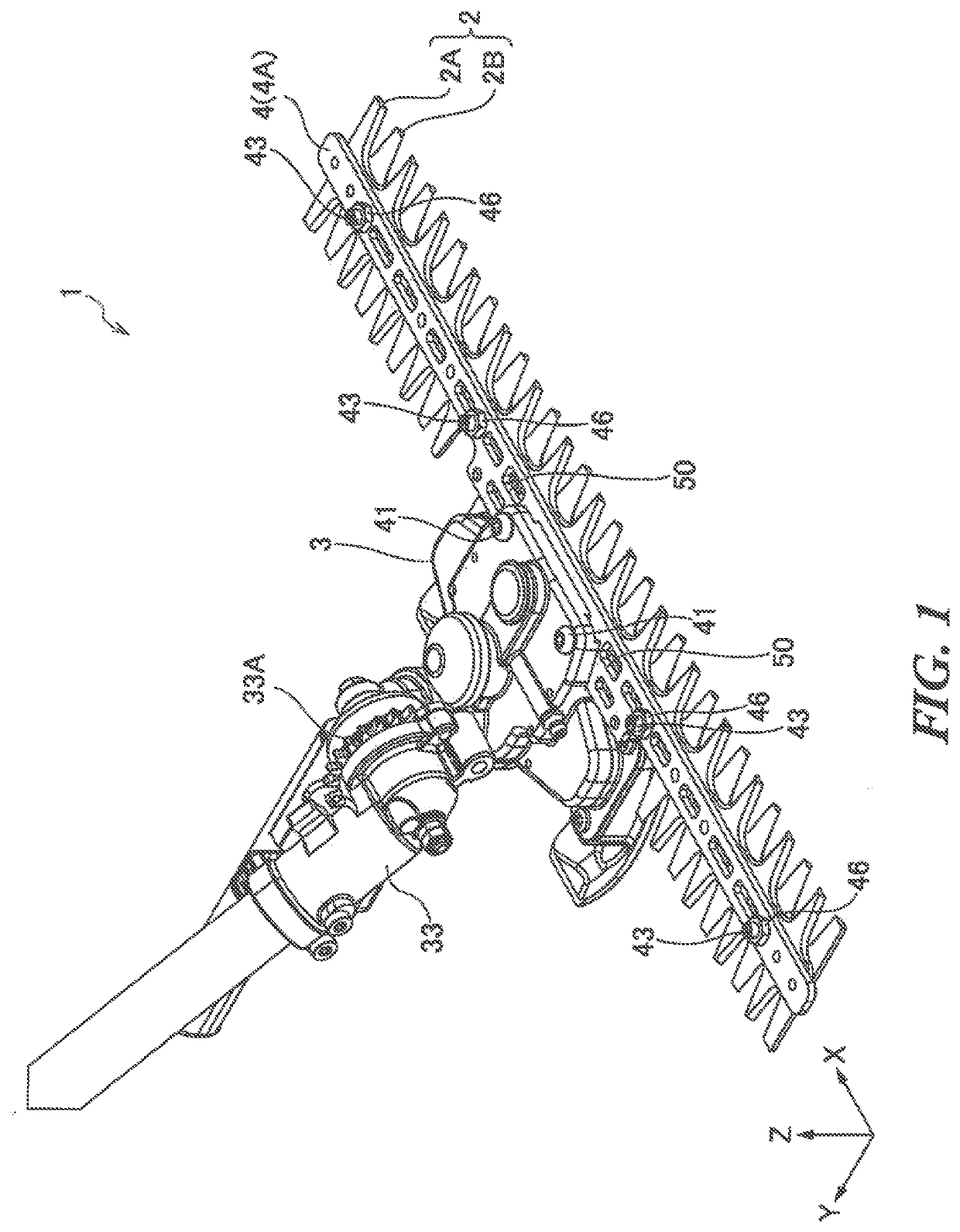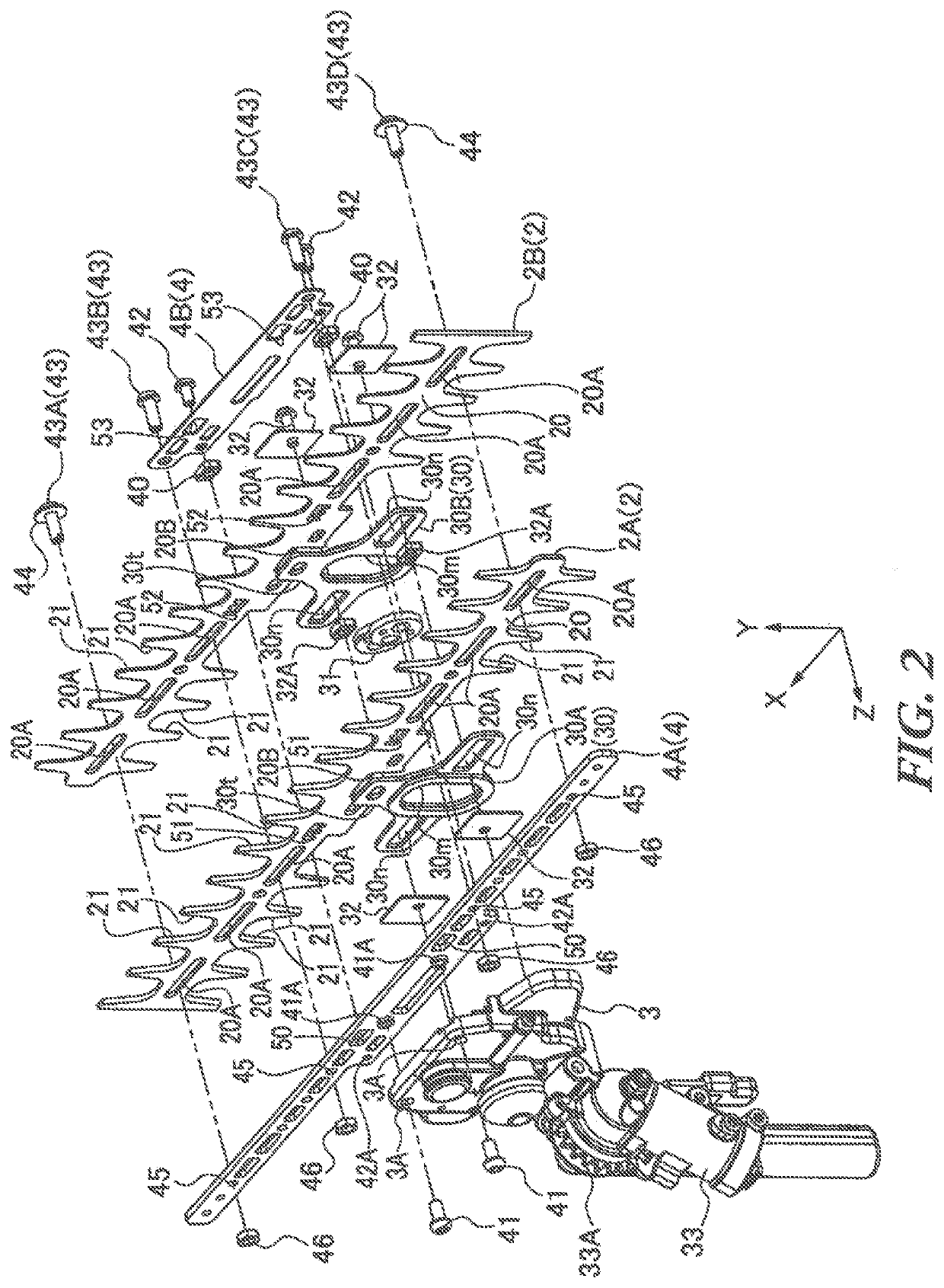Reciprocating blade apparatus and handheld working machine
- Summary
- Abstract
- Description
- Claims
- Application Information
AI Technical Summary
Benefits of technology
Problems solved by technology
Method used
Image
Examples
Embodiment Construction
[0019]Hereinafter, an embodiment of the present invention will be described with reference to the drawings. The same reference numbers in the different drawings indicate the same functional parts, and therefore repeated description for each of the drawings is omitted.
[0020]As illustrated in FIGS. 1 and 2, a reciprocating blade apparatus 1 includes a pair of reciprocating blades 2 (hereinafter referred to as “blade member”), a transmission case 3, and a blade support member 4. The reciprocating blade apparatus 1 is configured to cut and mow plants and so forth by sliding and reciprocating the blade member 2 relative to one another.
[0021]The blade member 2 includes two blades 2A and 2B made of metal plates which are stacked in the thickness direction (Z direction in the drawings). Each of the blades 2A and 2B of the blade member 2 includes a base 20 as a flat plate extending in the longitudinal direction (X direction in the drawings) and a plurality of teeth 21 protruding in the direc...
PUM
 Login to View More
Login to View More Abstract
Description
Claims
Application Information
 Login to View More
Login to View More - R&D
- Intellectual Property
- Life Sciences
- Materials
- Tech Scout
- Unparalleled Data Quality
- Higher Quality Content
- 60% Fewer Hallucinations
Browse by: Latest US Patents, China's latest patents, Technical Efficacy Thesaurus, Application Domain, Technology Topic, Popular Technical Reports.
© 2025 PatSnap. All rights reserved.Legal|Privacy policy|Modern Slavery Act Transparency Statement|Sitemap|About US| Contact US: help@patsnap.com



